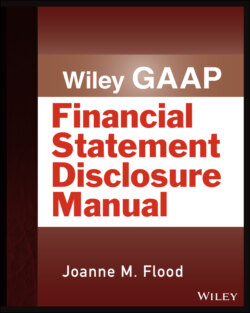Читать книгу Wiley GAAP: Financial Statement Disclosure Manual - Joanne M. Flood - Страница 37
AUTHORITATIVE LITERATURE
ОглавлениеStatements of financial positions (also commonly known as balance sheets or statements of financial condition) present information about assets, liabilities, and owners' equity and their relationships to each other. They reflect an entity's resources (assets) and its financing structure (liabilities and equity) in conformity with generally accepted accounting principles (GAAP). The statement of financial position reports the aggregate effect of transactions at a point in time, whereas the statements of income, retained earnings, comprehensive income, and cash flows all report the effect of transactions occurring during a specified period of time such as a month, quarter, or year.
It is common for the statement of financial position to be divided into classifications based on the length of the entity's operating cycle. Assets are classified as current if they are reasonably expected to be converted into cash, sold, or consumed either within one year or within one operating cycle, whichever is longer. Liabilities are classified as current if they are expected to be liquidated through the use of current assets or incurring other current liabilities. The excess or deficiency of current assets over or under current liabilities, which is referred to as networking capital, identifies, if positive, the relatively liquid portion of the entity's capital that is potentially available to serve as a buffer for meeting unexpected obligations arising within the ordinary operating cycle of the business.
